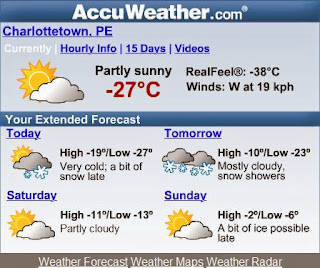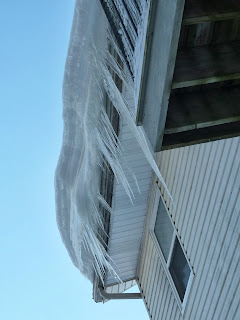I have over 2,500 names in my genealogical database, and most of those souls are long dead. For over twenty years I have steadily pushed my ancestral knowledge further back in time until I have run out of (close) lines to research. Genealogical research fits nicely with my love of puzzle solving, detection and meticulous record keeping.
Illiterate ancestors would have names written down for them by the likes of Registrars and Census Enumerators resulting in some hilarious phonetic monstrosities! Digitisation has brought an additional layer of inaccuracy. Handwriting might be hard to decipher so names get wrongly transcribed. I have become adept at guessing both alternate and phonetic spellings for names and have broken many deadlocked lines of research with a little creative imagination. Olding, Olden, Aulden, Auldring, Holden, Golden... see what I mean!
Out of curiosity I recently developed some strategies to work forward in time and possibly winkle out living people. Starting with my great grandparents (who died long before I was born) I sought out marriages of their many brothers and sisters. I used likely first marriage ages of between 18 and 30 and in most cases found obvious candidates in the British online records. Bear in mind only certificates of birth, marriage and death provide full details, but there is still surprisingly useful detail in the searchable indexes and lines can be followed forwards using certain techniques.
Take an ancestor with an unusual name, Eric Rine born 1902; there is only one indexed marriage in that name in all of Civil Registration (1837 to 2013). It must be his marriage in 1924 so his bride is Moir Griffiths. Her rare given name will be useful later. Next I search for births with the surname Rine but restricted to those where the mother's maiden name was Griffiths; there are four, registered either in the same district as the marriage or an adjacent one. I now have four more potential marriages look for. Using the same system I identify four marriages and fifteen children born of those marriages. After several hours of generational research into umpteen marriages and their issue I brought the descendants of Eric Rine forward to a raft of births in the latter twentieth century.
The proliferation of divorce and multiple re-marriage gains pace from the 1950s onward so when I fail to locate the birth entry for a wife I have to be mindful she may well be a divorcee. I then search for a previous marriage using her surname for a potential husband and her own given name for the spouse. Any 'Pearsall' marrying any 'Gwendoline' in a thirty year time frame will likely produce only one result, and that will give the spouse's maiden name. Now I can search for her birth entry. Occasionally I may have an even earlier previous marriage to negotiate first!
I'll also look for her death in her married name, any time after the birth of her last born child up to around age ninety. the death indexes quote not just the place but the age of the deceased, and after 1960-ish, their full date of birth. That information helps me pin down her correct birth entry, especially if her maiden name is common (although not ubiquitous), say Griffiths rather than Jones.
Going back to my earlier example of 'Moir Griffiths.' At first I couldn't know which of the four potential births in the indexes was hers - four with exactly the same name, two in one county, two in the neighbouring one. However, knowing she died as Moir Rine and finding a solitary entry in the indexes, the quoted age of that deceased pointed to the only correct birth candidate for this woman.
The site I subscribe to, FindMyPast, has digitised indexes not only of births, marriages and deaths, eight decades of Victorian censuses but a host of other records, including Electoral Rolls from 2002-2013. These you can search by name and place, either town or county, to find street addresses for registered voters. Then it's a couple of laptop clicks and I'm looking at the house on Google Street View; an interesting trail of detection that led from a distant Victorian relative to the lives and homes of modern day third or fourth cousins.
Street View has its shortcomings but an address search usually gets you to within striking distance. To find a particular house number I zoom in and look around the door, front wall or gate. If the number is too blurry I zip along the road looking at others to establish which way the numbers ascend then I work back to my goal address. Odd numbers on one side of the road, evens on the other of course. Other clues are there if you persist. Watch out for wheelie bins with twelve inch white numerals daubed on the sides! Bingo, nineteen times out of twenty I find the right house. Now I can save a screen grab as a jpeg and link the image to the address record in my database. I have several thousand images of people, gravestones and houses!
Next I do a name search in Facebook (both married and maiden names of course!) and narrow the results to a town. When public, I peruse the friends lists of likely candidates' profiles in search of confirmatory links to brothers, sisters, parents and even cousins. It's surprising in this security conscious age how many profiles are public. Once I've established the individual is correct I trawl their photos for recent images and save a copy so I can display a thumbnail head and shoulders on my gigantic family trees.
Well this is a different slant on the family history quest and one which I couldn't have dreamed of back in the nineteen eighties. I can search British digital indexes from Charlottetown on my laptop and bring up probable matches over a half century span in mere seconds. A feat which would have taken days of scouring through handwritten ledgers. I can view streets, houses and faces, all from a great distance. It's even possible to submit a DNA swab and have my ancestry analysed. I could learn from which gene pool I come and I could potentially hook up with international fifteenth cousins.
It's cheap these days at $99, but the hidden price is that your result set includes medical traits and susceptibilities. Information which not everyone is ready for yet.








